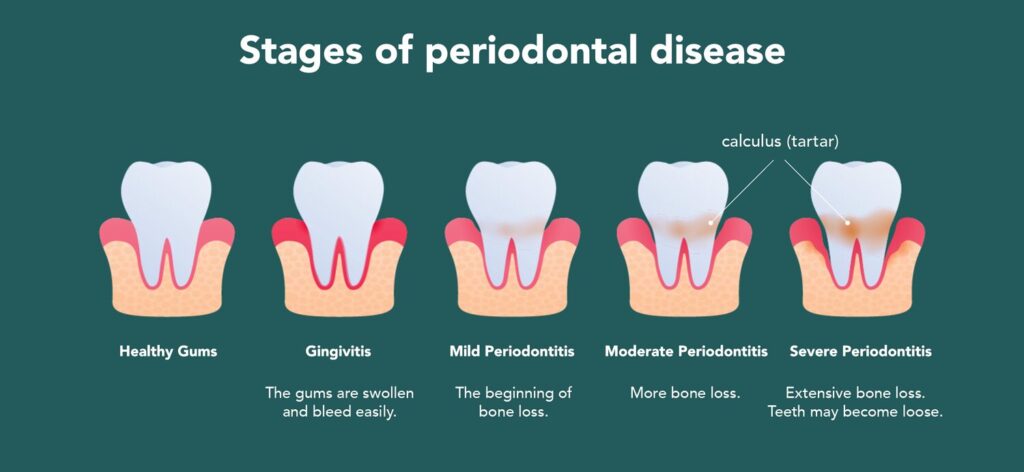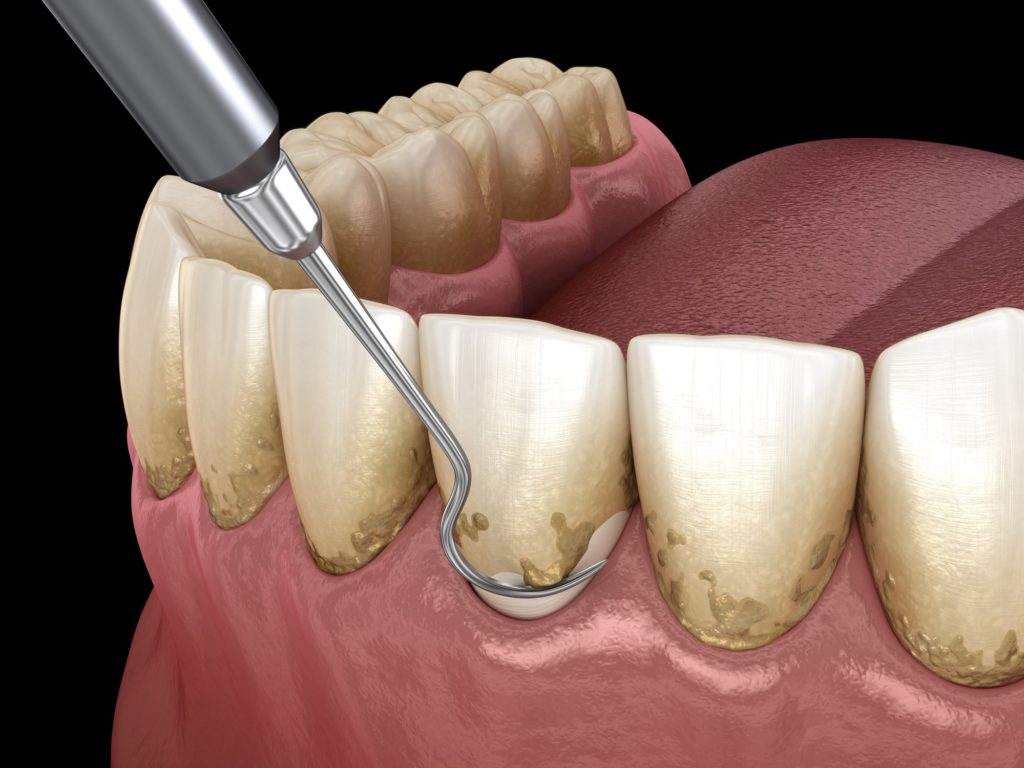The Stages of Gum Disease: Understanding and Preventing a Silent Threat
Navigating the Path of Gum Health
Gum disease, often a silent dental emergency ailment, is a common and potentially serious condition affecting many individuals. It’s crucial to understand the various stages of gum disease to prevent its progression and maintain optimal oral health. In this article, we’ll explore the stages of gum disease, from the earliest signs to the more severe manifestations, and how to effectively manage and prevent them.

Stage 1: Gingivitis – The Early Warning Sign
Gingivitis is the earliest stage of gum disease, characterized by inflammation of the gums caused by plaque buildup at the gumline. If not removed by daily brushing and flossing, plaque produces toxins that can irritate gum tissue, leading to gingivitis.
Symptoms of Gingivitis:
- Red, swollen gums
- Gums that bleed easily during brushing or flossing
- Bad breath
Prevention and Treatment:
- Regular brushing and flossing
- Professional dental cleanings
- Antimicrobial mouth rinses as recommended by your dentist.
Stage 2: Periodontitis – When Things Get Serious
If gingivitis is left untreated, it can advance to periodontitis. At this stage, the inner layer of the gum and bone pull away from the teeth, forming pockets. These small spaces between teeth and gums collect debris and can become infected.
Symptoms of Periodontitis:
- Gums that pull away from the teeth
- Persistent bad breath
- Pus between teeth and gums
- Loose or shifting teeth.
Management:
- Deep cleaning (scaling and root planning)
- Medications to control infection and pain
- Regular follow-up appointments

Stage 3: Advanced Periodontitis – The Critical Stage
This final stage of gum disease features the further spread and deepening of infection. The fibers and bone supporting your teeth are destroyed, which can cause your teeth to shift or loosen. This can affect your bite and, if aggressive treatment isn’t undertaken, may lead to tooth loss.
Symptoms of Advanced Periodontitis:
- Severe gum recession
- Deep pockets between gums and teeth
- Noticeable loosening or shifting of teeth.
- Increased sensitivity and pain
Treatment Options:
- Surgical procedures like flap surgery or bone and tissue grafts
- Intensive periodontal therapy
- Potential tooth extractions
Preventing Gum Disease: A Lifelong Commitment
The best way to combat gum disease is prevention. This includes maintaining good oral hygiene practices like regular brushing and flossing and visiting your dentist for check-ups and cleanings. Lifestyle factors, such as a balanced diet, avoiding tobacco, and managing health conditions like diabetes, also play a crucial role in preventing gum disease.
Take-home lesson: Your Gums Matter
Gum disease is a progressive condition, but with early detection and proper care, it’s largely preventable and manageable. Understanding the stages of gum disease is essential for maintaining good oral health and overall well-being. Don’t overlook your gums; they’re the foundation of a healthy smile. Regular dental port perry visits to your Port Perry dentist and good oral hygiene are your best defense against the silent threat of gum disease.
